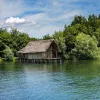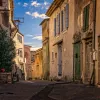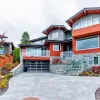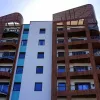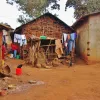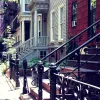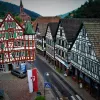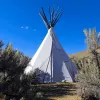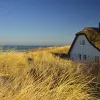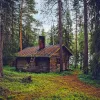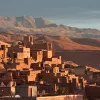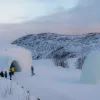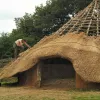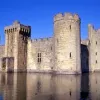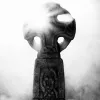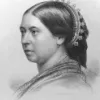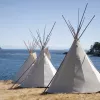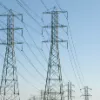Important update from TheSchoolRun
For the past 13 years, TheSchoolRun has been run by a small team of mums working from home, dedicated to providing quality educational resources to primary school parents. Unfortunately, rising supplier costs and falling revenue have made it impossible for us to continue operating, and we’ve had to make the difficult decision to close. The good news: We’ve arranged for another educational provider to take over many of our resources. These will be hosted on a new portal, where the content will be updated and expanded to support your child’s learning.
What this means for subscribers:
- Your subscription is still active, and for now, you can keep using the website as normal — just log in with your usual details to access all our articles and resources*.
- In a few months, all resources will move to the new portal. You’ll continue to have access there until your subscription ends. We’ll send you full details nearer the time.
- As a thank you for your support, we’ll also be sending you 16 primary school eBooks (worth £108.84) to download and keep.
A few changes to be aware of:
- The Learning Journey weekly email has ended, but your child’s plan will still be updated on your dashboard each Monday. Just log in to see the recommended worksheets.
- The 11+ weekly emails have now ended. We sent you all the remaining emails in the series at the end of March — please check your inbox (and spam folder) if you haven’t seen them. You can also follow the full programme here: 11+ Learning Journey.
If you have any questions, please contact us at [email protected]. Thank you for being part of our journey it’s been a privilege to support your family’s learning.
*If you need to reset your password, it will still work as usual. Please check your spam folder if the reset email doesn’t appear in your inbox.
Houses and homes

What are houses and homes?
The place you live in is your home, whether it’s a house with four walls and a roof, a flat that’s part of a larger building or a caravan on wheels that can move around. The homes in your city, town or village may look different from yours – this could be because they were built at a different time, and from different materials.
Homes have changed over the centuries because the way we live has changed during that time. For example, we don’t all live in one room with our horses and cows anymore the way that the Iron Age Celts did, and it’s more common to have bathrooms inside our homes now instead of at the back of the garden like the Victorians did.
Top 10 facts
- When people think about their home, everyone is thinking about a different place.
- The area around your home is called your ‘neighbourhood’ and the people who live there are your ‘neighbours’.
- No matter what point in history you look at, people had homes. Finding parts of those homes today can tell us a lot about past societies.
- Wild animals have homes too – this may be a cave, tree, den or nest.
- Some homes that people live in today look different from each other because they were built at different times.
- You can guess when a house was built just by looking at how it was made, such as whether the roof is thatched or has tiles.
- Houses can be built from a number of different materials, but some materials are better to use than others because they keep out wind and rain well.
- Houses are described as ‘terraced’, ‘semi-detached’ or ‘detached’ depending on whether they are joined with houses on both sides, on only one side or aren’t joined at all.
- Victorian factory owners built lots of rows of small houses so that the people who worked in their factories could live close by. Many of the houses people live in in Britain today are old Victorian terraces.
- Flats can be a convenient kind of home for people who don’t need a whole house. Sometimes large old buildings are split into flats or a whole new building will be constructed with lots of flats in it.

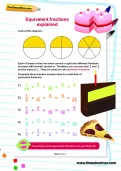
Boost Your Child's Learning Today!
- Start your child on a tailored learning programme
- Get weekly English & maths resources sent direct to your inbox
- Keep your child's learning on track
Did you know?
- Your home is where you feel comfortable and safe – it can be where your bedroom is, where your family is, or where all your toys and games are.
- Homes can be anything from houses and flats to cottages and caravans. They can be permanent, meaning you can’t pick it up and move it, or temporary, like a tent. They can also be different all over the world. What is your home like?
- Some homes look different now than they did centuries ago, but they are still used for the same reasons – somewhere to keep warm, dry and safe when they didn’t want to be outdoors.
- A flat can be a home, but not a house – it’s part of a house or a larger building.
- A caravan is a home that has wheels, so it can move around.
- Houses are made up of a few different things. They all have walls that stand up straight and make the house's shape, and a roof that covers the walls and keeps rain from coming in. There might be a chimney if the house has a fireplace, and a garage for keeping the car in.
- Wild animals have homes too, and those are just as different as the ones humans live in. Some animals build their homes out of mud or sticks, and some live in rock caves. Fish live in water homes, while birds like to live above ground in nests in trees.
- Some materials are better for building houses than others. For example, bricks and stone are strong, and fireproof. Cloth doesn’t keep water out, and it can break easily. Straight wood planks can stand side-by-side and keep out wind and rain, while sticks are all different sizes shapes and will leave a lot of holes. If you could build a house out of anything, what would you choose?
Have a look at the gallery below and see if you can spot these different types of houses and homes:
- A Victorian terrace cottage
- A stilt house
- Homes in Greece
- Houses in France
- A modern, architect-designed home
- An American suburban house
- High rise apartment buildings in London
- A home in Tanzania, Africa
- Brooklyn, New York City
- A German village
- A tipi, a traditional Native American home
- A cottage with a thatched roof
- Homes in Mumbai, India
- A log cabin
- A Moroccan village
- Igloos and ice buildings in Norway
- Homes in Venice, Italy
- Victorian terraced houses
- The recreation of an Iron Age Celtic roundhouses
Gallery
About
Our ancestors built houses based on what materials they had, and what they needed. The roundhouses that the Iron Age Celts built were made from wood, mud and straw because that’s what they had where they lived. They kept a hole in the very top of the roof so smoke from their indoor fire pit would have a place to go out. We cook using ovens and hobs in our homes today instead of a fire pit, so we don’t need a hole in the roof for smoke!
Some houses people live in today were built a very long time ago – they’ve just been fixed and updated because we live in a different way than people did when the houses were built. For instance, many people live in Victorian houses that are tall, narrow and all joined up in a row (terrace). Back when these houses were built they didn’t have indoor toilets, so people would go outside to an outhouse in their back garden. It’s more common for homes to have loos indoors these days, so bathrooms were built inside the Victorian houses.
A lot goes into building a house. An architect has to design the structure, a builder does the construction, a plumber hooks up pipes for hot and cold water, and an electrician makes sure the house is connected to electricity and that there are plug sockets for computers, televisions, lamps, refrigerators and more.
Most houses have a lot of different rooms – a living room where the sofa and television are, a kitchen where the oven and hobs are, a bathroom where the toilet and shower are, and bedrooms where everyone sleeps at night. Some houses have more rooms than that, especially if they are big houses – there might be a special room for playing games in, or even a room with a swimming pool. If you could build your own house, what rooms would you put in it?
People choose where to have their home based on a lot of different factors. It could be near to where they work, it could be where their friends and family are, or it could be in an area that they like the look of. For example, a farmer might have a hard time in a city, but in the country there’s lots of space for planting fields of crops and keeping animals.
Houses are different around the world, depending on different cultures, climates and needs.
- Igloos are dome-shaped homes made from packed snow. Inuits who live in cold places with lots of snow, such as northern Canada and Greenland, build these. They are well insulated so the inside stays warm even if it’s very very cold outside.
- Native Americans built teepes, which are a kind of tent. They’d put a lot of long, straight poles in the ground, join them together at the top and cover it with animal skins. Tepees are easy to move, so they were convenient when the tribe moved to a new spot.
- Stilt houses are built near rivers and other bodies of water south Asia and South America, which prevents flooding when the river is high. The water can flow underneath the house, because the floor is perched on top of a structure of stilts. They are also convenient for fishermen who live by the water.
- In most cities around the world, you’ll find high-rise apartment buildings that can house many different families. Because cities are crowded, these buildings solve a space problem by expanding up instead of out. Imagine all the things you could see from the very top floor!
Related Videos
Just for fun...
- Design your own teepe (or tipi)
- Walk through a Victorian house
- Look around a typical Chinese courtyard home
- Listen to architecture podcasts made for children: the FunKids podcasts cover homes from Tudor times to modern houses and even homes of the future
- Create your own city on the computer and discover exciting buildings with the Cbeebies programme Nina and the Neurons
- Make your own Tudor house model
Best books about houses and homes for children
Find out more
Read about buildings and interior design through the ages
See a diagram of a typical house in Ancient Rome
Peek inside Bayleaf, a timber-framed hall-house dating mainly from the early 15th century
The Museum of the Home has a collection of items from over 400 years of home life
See a 1940s house through videos
A beautiful Dutch dollhouse tells us a lot about life in 17th century Holland
Information about Victorian homes, both rich and poor
What were houses like 100 years ago? Find out with a BBC Bitesize guide to homes during World War I
Learn about life in a medieval castle
See a report about Tudor timber framed houses
See for yourself
Look for different types of homes around your neighbourhood. Do your friends live in flats or houses? Are they terraced, semi-detached or detached?
Visit some very grand houses through video tours: go to the Edwardian country house Manderston, No. 1 Royal Crescent (one of England's finest Georgian town houses) and Eltham Palace, a 1920s Art Deco building

